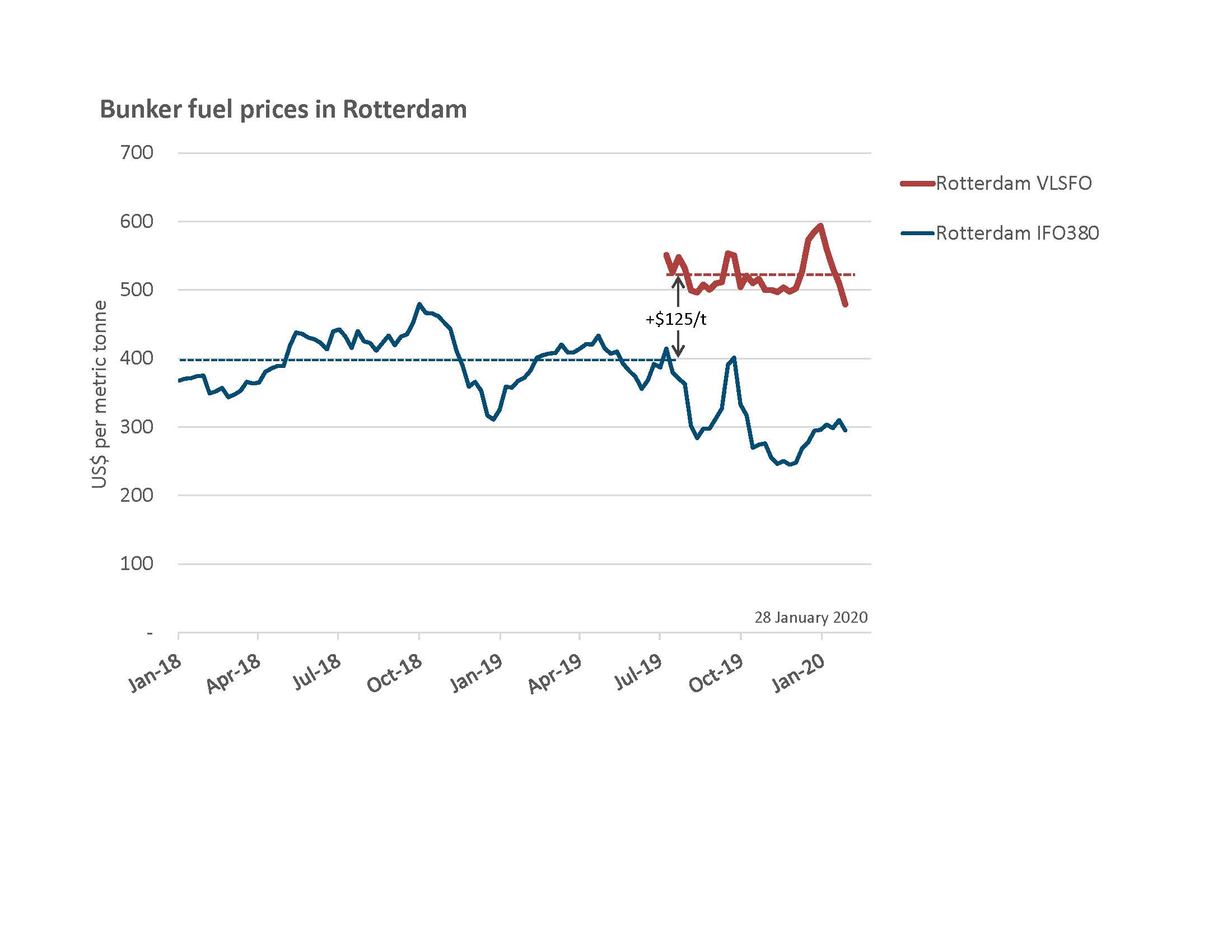The impact of IMO2020 on the cost of shipping wood pellets
by
User Not Found
Jan 30, 2020
The impact of the so-called IMO 2020 regulations on the cost of shipping wood pellets has not been as great as many feared last year, at least not yet.
The new rules, which took effect worldwide on 1 January, requires the bunker fuels used in shipping to have a maximum sulphur content of just 0.5%. Previously a maximum 3.5% sulphur content was permitted. Ships may continue to use high sulphur fuel, but only if they have installed scrubbers on the vessel’s boiler stack that reduce SOx emissions to a comparable level.
It had been feared some months ago that the shipping market would tighten in 2020 as vessels were scrapped or taken into dry-dock for modification. However, these fears appear to have been unfounded, so far at least.
Indeed, dry bulk ship charter rates were weakening during Q4 2019 and have weakened further since then. The Baltic Handysize Index on 28 January was 28% lower than at the end of December. Handysize trip charter rates from the US Gulf to Europe are being quoted at around USD8,000/day compared to USD10,500-11,000/day in December. Ship owners are reportedly suffering even steeper declines in rates in Asia. China’s economic slowdown, now exacerbated by the coronavirus epidemic, is arguably the principal cause.
While charter rates have dropped, bunker fuel costs have certainly increased. The price of VLSFO (Very Low Sulphur Fuel Oil) in Rotterdam is currently around $480/t. Bunker fuel markets are still adjusting to the new normal, and the price has fallen from a short-lived peak of almost $600/t at the beginning of January, but it is still well above the $300/t price of IFO380 which is now outlawed for all ships without scrubbers. This $180/t differential is causing ship owners a degree of anguish.
However, the impact on the cost of shipping wood pellets is arguably not as great as might at first appear. If we compare the average price of VLSFO since July last year with that of IFO380 over the previous 18 months (after which the price of high sulphur fuel began to drop in anticipation of the rule change) the differential is a more modest $125/t. (See the chart below.)
What does this add to the cost of shipping pellets? A Handysize bulk carrier will typically carry approximately 25,000t of pellets. It will travel at about 13 knots and will use around 14t of fuel oil each day that it is at sea. A voyage from the US Gulf to Rotterdam, say, will take about 15 days, during which time the ship will consume 210t of fuel. If this fuel is now $125/t more expensive, the total cost of the bunker fuel used during the voyage will have risen by $26,250 or by $1.05/t pellets.
This is not insignificant when margins are tight and when pellet suppliers are trying to reduce the cost of pellets, not see them going up, but nor is it a game-changer as far as the cost structure of the pellet market is concerned.
